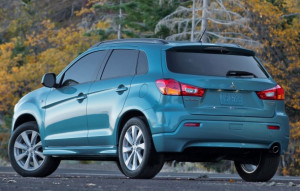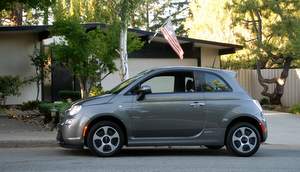Clean Fleet Report Introduces Three New “Clubs”
We live in amazing automotive times. The best testaments to that are the three new “MPG clubs” that we’re introducing at Clean Fleet Report. We’ve noticed that both the EPA-designated and real-world the fuel economy on the vehicles we love and need are climbing and want to celebrate that fact. It also will serve as a handy list for your shopping needs if you’re looking for a car or SUV/CUV that will not only do everything you need, but get great fuel economy. A quick note about the SUV/CUV designation: Pick whichever one suits you. These days most of these successors to the station wagon and minivan (and traditional truck-based sport utility) is based on a car chassis, may or may not include all-wheel drive or four-wheel drive, but gives off the aura (if not the actual ability) to go anywhere, haul anything and be the Swiss Army knife of a vehicle that can easily become your trusty friend. So, without further fanfare, let’s introduce something we’ve hinted at in several reviews, along with a new twist. These are the clubs we think every car and SUV/CUV should be striving to join. The good news–it’s getting easier as new and improved technology comes online. These are somewhat exclusive clubs right now, populated by not enough variety of vehicles. That will change in the coming years as we expect these clubs to grow and new ones to come along. For now, welcome to Clean Fleet Report’s new categories of cars and SUVs/CUVs.
The 30 MPG Club — for SUVs/CUVs
We’re really glad to see this club growing and adding new and bigger members. This is where many people live, with one vehicle big enough to handle family chores, major big-box store runs and hauling everyone in the family in comfort, sometimes even leaving the road behind. The 30 MPG mark used to be out of reach for most sport utility or all-wheel drive vehicles, but times have changed. We’ve got a good group of cars (most have little resemblance to trucks any more) that have joined this group based on their EPA or as-tested highway fuel economy. Here’s a list of some of our 10 most recent tests of club members:
2014 Mitsubishi Outlander Sport
2014 Volkswagen Tiguan TDI (Euro Spec)

The 40 MPG Club — variety is the new spice of life in this segment
Only a few years ago, you had to pony up extra dollars for a hybrid to get into this club. Now, we were tempted to up the ante to make this a 45 or 50 MPG (highway) club, but at this point that would make it a pretty small and fairly expensive club. I’m pretty sure we’ll be raising the bar for this club in a few years, but for now this gives a good variety of options and still promises to deliver great fuel economy at reasonable prices — and most important, not just in miniature vehicles (though there are a few of those). Here’s a list of the Top 10 of this club for 2015 based on EPA ratings with links to our tests of earlier models. We’ll be getting to these guys soon (remember, not everyone has 2015 models on the market yet and there are 20 more members of this club from Mazda, Chevrolet, Volkswagen, Fiat, Nissan, Ford, Audi, Honda, Mitsubishi, Hyundai and Kia–and if we went back to the 2014 models there would be even more members, which were some of the ones we have tested and include links to those tests).
1. 2015 Chevrolet Spark EV – 109 MPGe (electric)
2. 2015 Fiat 500e – 108 MPGe (electric)
3. 2015 Nissan Leaf – 101 MPGe (electric)
4. 2015 Chevrolet Volt – 98 MPGe (plug-in hybrid electric)

5. 2015 Volkswagen Jetta TDI manual – 46 MPG (diesel)
6. 2015 Volkswagen Golf TDI manual – 45 MPG (diesel)
7. 2015 Volkswagen Jetta TDI automatic – 45 MPG (diesel)
8. 2015 Mitsubishi Mirage automatic – 44 MPG (gasoline)
9. 2015 Volkswagen Passat TDI manual – 44 MPG (diesel)
10. (tie) 2015 Audi A3 TDI – 43 MPG (diesel)
10. (tie) 2015 Ford Fiesta SFE – 43 MPG (gasoline)
10. (tie) 2015 Volkswagen Golf TDI automatic – 43 MPG (diesel)
The 54.5 MPG Club — for the overachievers and early adopters
This number–54.5 MPG–is not plucked out of the air, of course, but is a significant market. This is the combined fuel economy the average car of 2025 is supposed to get. We already know that the real world fuel economy of cars 10 model years from now will not all be 54.5 and many will probably fall far short and still be counted due to all kinds of arcane rules built into the system. Still, we think this is an important club to keep an eye on because it will give us a glimpse at where the leading technologies are taking us, how much they’ll cost, and how they work in the real world. Amazingly, we have quite a few players in this club already, representing two basic approaches to MPG – pure battery electric or plug-in hybrid. fuel cell cars should be showing up soon and expect some conventional but very efficient gas and diesel models to edge up there shortly. Here’s the run-down of club members and a bit about each with links to Clean Fleet Report stories (for this group we’ve included 2014 and 2015 models but have combined models to eliminate variations based on different options).
1. 2014 BMW i3 – 124 MPGe (electric)
2. 2014/5 Chevrolet Spark EV – 119 MPGe (electric)
3. 2014 Honda Fit EV – 118 MPGe (electric)
4. 2014 BMW i3 REX – 117 MPGe (plug-in hybrid)
5. 2014/5 Fiat 500e – 116 MPGe (electric)
6. 2014 Honda Accord Plug-in Hybrid – 115 MPGe (plug-in hybrid)

7. 2014/5 Nissan Leaf – 114 MPGe (electric)
8. 2014 Mitsubishi iMiEV – 112 MPGe (electric)
9. 2014 Smart Fortwo ED coupe/convertible – 107 MPGe (electric)
10. 2014 Ford Focus Electric – 105 MPGe (electric)
11. 2014/5 Chevrolet Volt – 98 MPGe (plug-in hybrid)
12. 2014 Tesla Model S 60/85 kWh battery packs – 95/89 MPGe (electric)
13. 2014 Toyota Prius Plug-in Hybrid – 95 MPGe (plug-in hybrid)
14. 2014 Ford C-Max Energi – 88 MPGe (plug-in hybrid)
15. 2014/5 Ford Fusion Energi – 88 MPGe (plug-in hybrid)
16. 2014 Mercedes-Benz B-Class Electric Drive – 84 MPGe (electric)
17. 2014 Toyota RAV4 EV – 76 MPGe (electric)
18. 2014 BYD e6 – 63 MPGe (electric)
There are many great cars out there now and more on the way. Our job is to keep feeding you all of the latest, but let us know what your priorities are and we’ll make sure we include them in upcoming articles.
